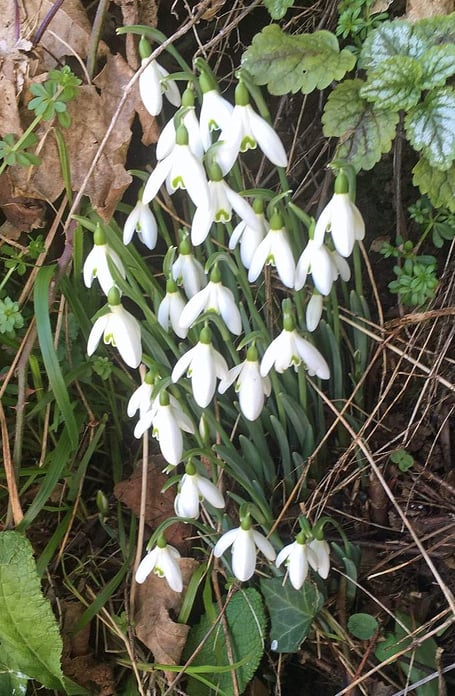I TOOK a New Year’s Day walk down to Trehunsey Bridge and inside the gateway to a field where some bullocks grazed were some Dung Roundhead mushrooms growing on cattle droppings.
Funny, I thought, a bit too cold for mushrooms as their season is early spring to late autumn, but there again, the dung must have been warm for part of the day when it was dropped, so the fungi had a warm place to grow.
I remember some 20 years ago I was walking across farmland near Liskeard where I met three young men who eventually told me they were looking for Magic Mushrooms, but I could see they were collecting dung roundheads that were growing on cow pats.
I told them they may not be the hallucinogenic mushrooms that they were seeking and they might get ill if they ate them, but they didn’t believe me so we parted company.
Some Yellow Brain fungus was easy to spot growing on the trunk of a moss covered dead tree.
This fungus, which can be seen all the year around, consists of flabby, gelatinous folds of flesh, yellow in colour but dark orange and brittle when dried out.
I spotted a patch of Lichen growing on a tree that was going through its death throws.
Hard luck on the lichen really, as it probably established itself several years ago and now its host is dying and will probably be sawn up for firewood and the ancient lichen will burn as well.
As far as I could tell, this lichen was Parmelia caperata that grows on mature trees and is common in parts of Southern Britain that are relatively free from air pollution.
There were some dried spiky seeds of the Greater Burdock plants on stalks that had grown in a lay-by and I remember when I was a schoolboy, we called them Sticky Buttons and would pick them to throw at mates and they would stick on their clothes – its funny what amused us!
An essence made from the stalk and roots of the plant is used in the soft drink Dandelion and Burdock which was once popular, and I knew a winemaker in Liskeard who made a brew from them.
There are one or two very dense and prickly Furse or Gorse bushes down in the valley near the Tiddy (they grow mostly up on Caradon Hill) and, looking carefully at their yellow flowers, it’s easy to see the resemblance to those of the garden pea family.
Although they are larger and more colourful, they are followed by pea-like seed pods that burst open when dry.
Groups of Snowdrops decorate the road hedges and when I was nearly home, I saw a couple of Tormentil flowers on a stone hedge.
These are beautiful flowers and are members of the Potentilla family and are unusual as they only have four yellow petals.
In fact, their Latin name is Erecta, which is a mystery as the plant is a creeper and does not stand erect.




.png?width=209&height=140&crop=209:145,smart&quality=75)
Comments
This article has no comments yet. Be the first to leave a comment.